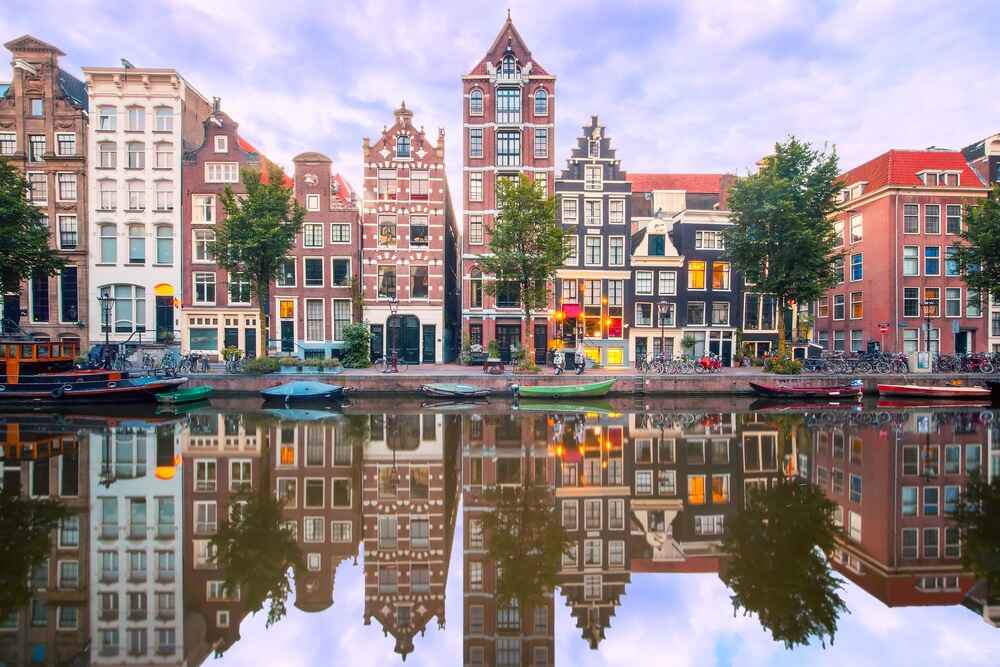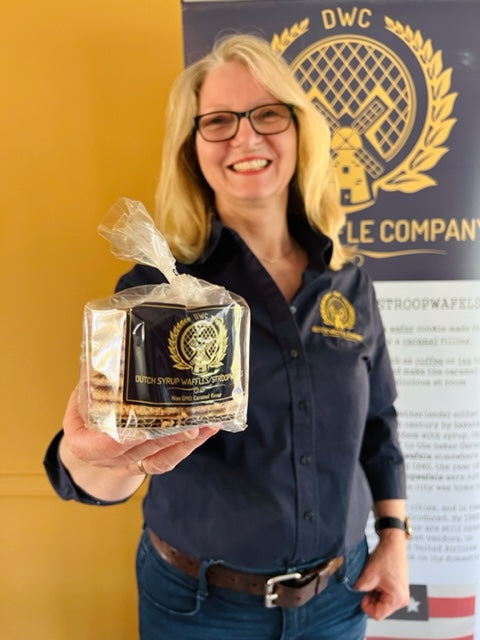Have you ever scrolled through social media and stumbled upon pictures of perfectly curated cozy nights in, complete with twinkling lights, steaming mugs, and an overwhelming sense of warmth? Or maybe you've seen friends posting about their adventures in Amsterdam, cafes overflowing with laughter and chatter. If so, you might have brushed up against the Dutch concept of gezellig without even realizing it. The word gezellig captured a lot of attention after its mention on the famous show Ted Lasso, but did you know that even Obama after a visit to the Netherlands once said: “It has been truly gezellig.”
But what exactly does "gezellig" mean? It's a word that defies a single, neat translation. The word is almost as influential on their culture as their famous stroopwafels are. It's a feeling, an atmosphere, a way of life. In this blog, we'll delve deep into the world of gezelligheid (the noun form of gezellig) and explore how it shapes Dutch culture. We'll go into its history, tracing its roots in the Dutch language and society. We'll see how this unique concept has begun to influence other parts of the world!
Here’s what we’ll cover:
The many meanings of gezellig
The beauty of "gezellig" lies in its versatility. It can describe a cozy night in with loved ones, a lively pub filled with laughter, or a quiet evening curled up with a good book. It's about creating a warm, inviting atmosphere that sparks connection and contentment.
Think of it like this: imagine the feeling of curling up with a good book on a rainy afternoon, the rhythmic patter of raindrops a soothing counterpoint to the crackling fire in the hearth. That's gezellig. Picture a bustling cafe, filled with the warm glow of candlelight and the murmur of happy conversation – that too, is gezellig. Even a simple walk along a sun-drenched beach with a loved one, the sound of waves crashing against the shore a constant companion, can be considered gezellig. It's all about finding comfort and joy in the simple things, in the connections we forge with others, and in the atmosphere we create around ourselves.
Gezelligheid is more than just a word; it's a core value in Dutch society. It's about fostering a sense of community, togetherness, and shared enjoyment. The Dutch take pride in creating a welcoming and comfortable environment for themselves and others. This focus on gezelligheid is evident everywhere you look in the Netherlands. From the tiny, candlelit cafes with their inviting warmth to the emphasis on spending quality time with family and friends, Dutch culture revolves around creating a sense of cozy contentment.
There's even a saying in Dutch: "Het is niet wat je meemaakt, maar met wie je het meemaakt" (It's not what you experience, but who you experience it with). This perfectly encapsulates the spirit of gezelligheid – it's about the connections we forge and the shared experiences that bring us joy. It's not about the activity itself, but the warmth and connection it creates.
Imagine two scenarios: in one, you're celebrating a promotion at a fancy restaurant, surrounded by colleagues, but the atmosphere feels cold and sterile. In the other, you're huddled by a crackling fireplace with a close friend, sharing a simple meal and deep conversation. The first scenario might be a success professionally, but it lacks the warmth and connection that defines gezelligheid.
Gezelligheid is about creating a sense of belonging, a space where we can truly relax, be ourselves, and connect with those around us. It's about slowing down, savoring the moment, and finding joy in the simple things.
How to pronounce gezellig
Pronouncing the Dutch word "gezellig" can be a bit tricky for non-native speakers, but with a little practice, you'll get it right! "Gezellig" is a term that embodies a sense of coziness, comfort, and pleasant social atmosphere. Check out this video to help you master its pronunciation:
Gezelligheid in the heart of Dutch culture
Gezelligheid transcends the realm of a mere word; it burrows deep into the very fabric of Dutch society, acting as a cornerstone value that shapes their way of life. It's a philosophy centered around fostering a sense of community, togetherness, and shared enjoyment. The Dutch take immense pride in creating a welcoming and comfortable environment, not just for themselves, but for everyone around them.
This emphasis on gezelligheid permeates every aspect of Dutch life. Look no further than the quintessential Dutch cafes – tiny havens bathed in warm candlelight, where the aroma of freshly brewed coffee mingles with the murmur of happy conversation. These cafes aren't just places to grab a quick caffeine fix; they're social hubs, perfect for catching up with friends, neighbors, or even strangers, fostering a sense of cozy connection.
The Dutch also prioritize spending quality time with family and friends. Imagine a typical Friday night in a Dutch household. The table is laden with a simple yet satisfying meal, perhaps a hearty stew or oven-baked fish. Candles flicker, casting a warm glow on smiling faces as stories are shared, laughter fills the air, and a genuine sense of togetherness prevails. This isn't just a meal; it's a celebration of life, relationships, and the simple joy of being together – the very essence of gezelligheid.
Dutch homes themselves often reflect this focus on coziness and warmth. Picture stepping into a typical Dutch living room – think plush throws draped over comfy armchairs, strategically placed bookshelves overflowing with stories, and perhaps a crackling fireplace as the centerpiece. The overall impression is one of comfort, inviting you to relax, unwind, and connect with those around you.

A cozy Dutch livingroom
But gezelligheid isn't just about physical spaces; it's also about cultivating a certain mindset. The Dutch appreciate the simple things in life – a walk on a sunny beach, a bike ride through picturesque countryside, or simply enjoying a cup of tea with a Dutch stroopwafel while watching the rain fall. They understand the importance of slowing down, savoring the moment, and finding joy in the everyday.
In essence, embracing gezelligheid is about creating a sense of belonging. It's about nurturing a space where we can truly be ourselves, feel comfortable and accepted, and connect with those around us on a deeper level. It's a philosophy that encourages us to slow down, appreciate the simple things, and find joy in the shared experiences of life.
Gezelligheid in everyday life
Gezelligheid isn't just a grand philosophy reserved for special occasions; it's a way of life that can be woven into the very fabric of everyday experiences. Let's explore how the Dutch incorporate this concept into their daily routines, transforming even the mundane into moments of cozy contentment.
Koffie
Imagine this: you're in the middle of a busy workday, emails piling up and deadlines looming. But then, a magical word rings out: "Koffie!" The Dutch word for coffee (pronounced the same as coffee). This isn't just a call for a coffee break; it's a call for a mini-dose of gezelligheid.
A Dutch “koffie pauze” goes beyond the simple act of grabbing a coffee and a work snack. It's about taking a moment to step away from the daily grind, connect with colleagues, and share a laugh or two. Picture a group of friends gathered around a table, steaming mugs of coffee warming their hands, as they chat about life, work, or simply the weather. This relaxed atmosphere fosters a sense of community and belonging, a perfect example of how gezelligheid can be incorporated into even the most routine aspects of life.
Borrels
The Dutch workday might be efficient, but they also know the importance of unwinding after a long day. Enter the concept of "borrels" (pronounced bor-rels). These are informal evening gatherings, typically held at pubs or cafes, where friends and colleagues congregate over drinks and snacks. Often those borrels take place on Friday and that’s why it is sometimes called “vrijmibo”, so “vrijdag middag borrel”.
Borrels are a prime example of gezelligheid in action. The atmosphere is warm and inviting, filled with laughter, conversation, and a shared sense of community. It's a chance to de-stress, catch up with loved ones, and forge new connections, all within a cozy and relaxed setting.

Crowded terraces in Amsterdam
Game nights
Board games are a beloved pastime in the Netherlands, and for good reason. They offer a fun and interactive way to spend time with friends and family, fostering a sense of connection and shared enjoyment. Think of a group huddled around a table, faces lit by the warm glow of a lamp, as they strategize, laugh, and compete in a friendly game.
The element of playfulness and shared experience creates a perfect example of gezelligheid. It's a reminder that joy and connection can be found in the simplest of activities, as long as we're surrounded by loved ones and creating a warm and inviting atmosphere.
These are just a few examples of how the Dutch incorporate gezelligheid into their everyday lives. From fika breaks to borrel evenings and playful game nights, they demonstrate how even the most routine activities can be transformed into cozy and enjoyable experiences with a little creativity and a focus on connection.
Gezellig on Ted Lasso
The word gezellig garnered attention after its mention on the famous show Ted Lasso. In an episode set in Amsterdam, where the team is visiting for a friendly match against the Dutch soccer team Ajax, Rebecca ends up on a houseboat with a charming Dutchman who keeps repeating "gezellig" to describe their cozy evening together.
By now, you understand the meaning of gezellig, and if you've watched Ted Lasso, you’ll agree that the show embodies this concept beautifully. Ted Lasso isn't just about soccer; it’s about people finding support and warmth in each other. The show emphasizes creating gezelligheid—places where people feel safe, welcomed, and nurtured, perfectly illustrated in a scene with the team joyfully singing Bob Marley’s "Three Little Birds" on a bus.
If you haven’t watched the show, I highly recommend it. Ted Lasso offers more than just laughs and sports; it provides heartwarming lessons on kindness, community, and the importance of creating cozy, supportive spaces. Each episode brings a little bit of gezelligheid in our everyday lives.
When is something gezellig vs. ongezellig?
To truly understand gezellig, we need to explore its opposite: ongezellig (pronounced ohn-huh-ZELL-ig). This word describes anything that is uncomfortable, unpleasant, or lacks a sense of warmth and togetherness.
Here's a quick comparison to illustrate the difference:
Gezellig |
Ongezellig |
|
A cup of coffee in the sun with a friend |
Sitting alone in a brightly lit office |
|
Laughter shared with friends and family during Sinterklaas (Dutch Santa Claus) |
An awkward silence on a first date |
|
A Vrijmibo with your colleagues to welcome the weekend |
Leaving the party before it started |
Gezelligheid in different contexts
Gezelligheid isn't confined to the warm embrace of your living room or the laughter-filled atmosphere of a pub with friends. This concept of cozy contentment can be surprisingly versatile, weaving its magic into various aspects of Dutch life. Let's explore how gezelligheid transcends specific locations and becomes a guiding principle in different contexts.
The gezellige workplace
The Dutch approach to work is known for its efficiency, but that doesn't mean they neglect the importance of creating a pleasant work environment. Many Dutch companies prioritize creating a friendly and collaborative atmosphere, fostering a sense of gezelligheid even in the office.
Imagine a workplace with comfortable furniture, inviting common areas with plush armchairs for informal chats, and perhaps even strategically placed fairy lights to create a warm ambiance. This focus on coziness encourages employees to feel comfortable, fostering a sense of community and belonging within the workplace. It's a win-win situation – a happy and comfortable workforce leads to increased productivity and creativity.

Public spaces with personality
Gezelligheid extends beyond the walls of homes and offices. It shapes the very design of Dutch towns and cities. From the charming canals of Amsterdam, lined with inviting cafes and bustling with friendly faces, to the lively squares of Rotterdam, filled with benches perfect for people-watching and spontaneous conversations, Dutch public spaces are designed to be inviting and encourage social interaction.
Think of a sun-drenched market square, bustling with vendors selling fresh poffertjes (Dutch mini pancakes) and other local crafts. Laughter fills the air as people chat, sample wares, and soak up the atmosphere. This vibrant space embodies the essence of gezelligheid – a place for connection, shared experiences, and a sense of belonging within the larger community.
Gezelligheid at Dutch Waffle Company
Here at Dutch Waffle Company, gezelligheid holds a special place in our hearts. It's not just a concept, it's the very essence of what we do – bringing people together over delicious treats. For us, a core part of gezelligheid is sharing.
Imagine this: a crisp autumn afternoon, the air tinged with the sweet scent of cinnamon and caramel. You hold a steaming mug of coffee, its warmth radiating through your hands. Beside you sits a plate adorned with a perfectly golden stroopwafel, its syrupy center just begging to be savored. The first bite releases a burst of flavor – the crisp waffle yielding to the gooey caramel, a perfect harmony of textures and tastes. This, to us, is the epitome of gezelligheid – a simple pleasure, shared in a cozy moment.
But gezelligheid isn't just about solitary indulgence. It's about fostering connections and creating memories with loved ones. Picture a gathering of friends, laughter echoing through the room as stories are shared and plates piled high with warm apple pie. Each bite is not just about the taste, but about the joy of being together, the sense of community that comes from sharing a delicious treat.
At DutchWaffleCompany, we believe that food has the power to connect people. Our stroopwafels and pie crusts are more than just treats; they're a bridge to creating those special moments of gezelligheid. So, the next time you savor one of our creations, remember the warmth, the connection, and the joy that lie at the heart of this Dutch tradition.

So, does Gezelligheid spark joy in your life?
Gezelligheid is a reminder that happiness doesn't always require grand gestures or expensive experiences. It's about slowing down, appreciating the simple things, and nurturing a sense of connection with the people and environment around us. So, the next time you light some candles, brew a cup of tea, and curl up with a loved one, you might just be embracing a little bit of Dutch gezelligheid in your own life.
We've explored the world of gezelligheid, uncovering its multifaceted nature and its deep influence on Dutch culture. But the true beauty of this concept lies in its universality. Gezelligheid isn't just for the Dutch; it's a philosophy anyone can embrace to create a more content and connected life.
Think about it: is there a steaming mug of tea that brings you comfort? Or a particular place that evokes a sense of warmth and belonging? Perhaps it's a simple activity shared with loved ones that sparks joy. These experiences, big or small, can all be infused with a touch of gezelligheid.
Here's your invitation to weave a bit of Dutch coziness into your own life. Light some candles, dim the lights, and gather your favorite people. Put on some music that fills you with joy, or curl up with a captivating book. Savor a cup of tea or indulge in a simple pleasure.
Gezelligheid isn't about following a strict set of rules; it's about cultivating a sense of cozy contentment and fostering meaningful connections. It's about slowing down, appreciating the simple things, and finding joy in the everyday moments.
So, the next time you crave a bit of warmth and togetherness, remember the magic of gezelligheid. Let it inspire you to create your own little haven of comfort, connection, and joy. You might be surprised at how these tiny moments of gezelligheid can enrich your life and bring a touch of Dutch magic to your everyday experiences.





1 comment
Thanks for explaining gezellig. I’d heard it on Ted Lasso but wasn’t sure what it meant. Cool to read this!